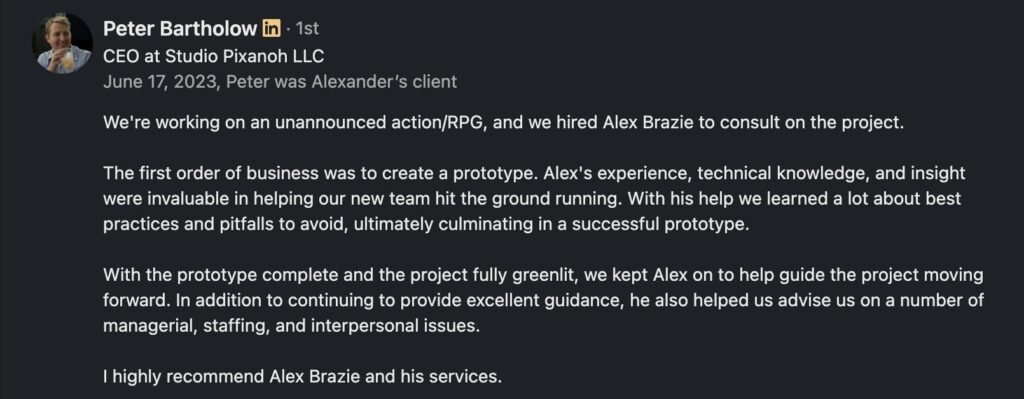The word physics can either paralyze or thrill the aspiring game designer. As a player, you might take it for granted that video games come with a physics engine, but this is a relatively new phenomenon.
This will not be a technical guide to game physics, but instead an introduction to physics from a game design perspective. I’m here to help you think about physics as a design tool to improve the game experience.
I’ll also point you to the physics concepts that are most useful in game design, give some general tips on how to utilize them and recommend resources for learning more.
By the way, as you’re reading this post, if you have any questions or issues implementing you can get free help in the #game-design channel in Funsmith Club Discord, or you can DM me there.
Get notified each week on the latest game design tips, guides, templates, and workshops that I don’t share anywhere else here
What is Video Game Physics
Video game physics are simulated laws of physics programmed into video games that often work differently than real-world physics. These simulated laws of physics can range from mimicking the perception of real-world physics to intentionally deviating from actual physics depending on the intended player experience goal.
Brief Evolution of Video Game Physics in Game Development
Before Unity and Unreal became the de facto industry standards, you either had to write your own physics—a daunting task—or utilize a premade physics library such as Havoc.
Even then, these physics engines often required intense tuning, tweaking, and experimentation to reach any level of consistency.
As a result, early game designers usually planned their game mechanics independently from the physics.
This approach tends to be a good thing, allowing designers to think about the player experience first, plan the core gameplay design, and then integrate physics where it makes sense.
However, with the commoditization of game physics and its ubiquitous availability to game developers, we’ve seen a surge of games that lean into physics engines.
From the simple but joyful World of Goo to the ridiculous antics of Far Cry and Breath of the Wild, the line between gameplay and physics has begun to blur as the game development tools gets more sophisticated.
Why Game Physics is Important
My design sensibilities were born in the 2D era when all rules and concepts were handcrafted game by game to avoid relying on the messy, unstable early physics engines.
Since then, working on Ori & The Will of The Wisps has shown me that a physics-controlled character can be both visceral and tight.
Let’s talk for a bit about what I’ve learned through these experiences. What does physics contribute to games?
Realism
The first and most commonly misunderstood argument is realism. Video game physics can indeed replicate reality and accurately represent the natural behavior of our material world.
The potential benefit here is that when done correctly, the game’s behavior reflects the players’ intuition about how the world and universe work.
However, the caveat here is that few people actually understand how the world works physically, or expect games to behave the same way.
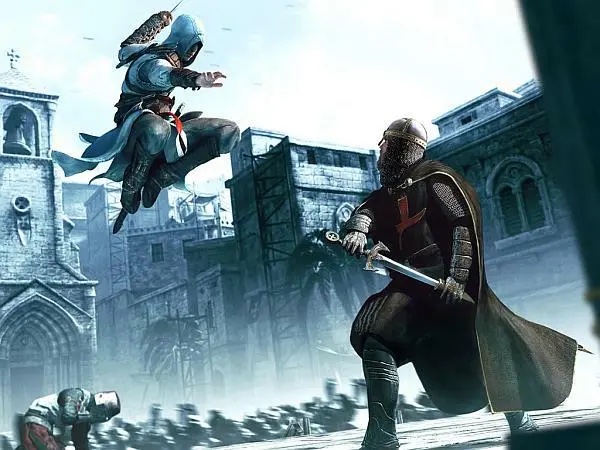
While we all know roughly how high we can jump in reality, few bat an eye when Ezio performs superhuman feats.
This means that adding purely realistic physics to games doesn’t always improve the experience.
In fact, the default approach for games often intentionally diverges from real physics. For example, most physics engines give all objects identical mass independent of size, material, and structure.
Fun
This transitions nicely into the topic of fun.
Often, subverting the laws of realistic physics simulation creates better gameplay. The gameplay purpose trumps the natural laws of the universe.
The most famous example of this is that platformers usually use 300% gravity to allow characters to leap to incredible heights, while still making jumps snappy and quick.
Even if a physics simulation has the technical ability to perfectly replicate reality, this puts excessive constraints on gameplay—if the game development team even has enough game math and physics knowledge to implement it correctly.
However, physics is absolutely still important even when you’re breaking real-world rules. Games like Portal and Goat Simulator showcase the many possibilities created when unrealistic but consistent physics is tightly coupled with the gameplay.
Imagine playing Fall Guys or a sports game like Forza with an unreliable physics simulation. The consistent, well-thought-out physics in these games enables the fun, whether or not it’s realistic.
Game Feel (Viscerality)
Once the core gameplay is established, simple physics additions can be excellent for layering details atop the core experience.
Although decoupled from gameplay, they make the world feel more responsive. Your sword clanks, a magical blast scatters debris, or your cape ripples behind you. These are phenomenal touches added to the game world.
These physical phenomena are incredibly difficult to handcraft, and writing the full rules of the physical world is often a wasted effort. This is where simple force vectors, particle systems, and real-world physics shine in most modern games.
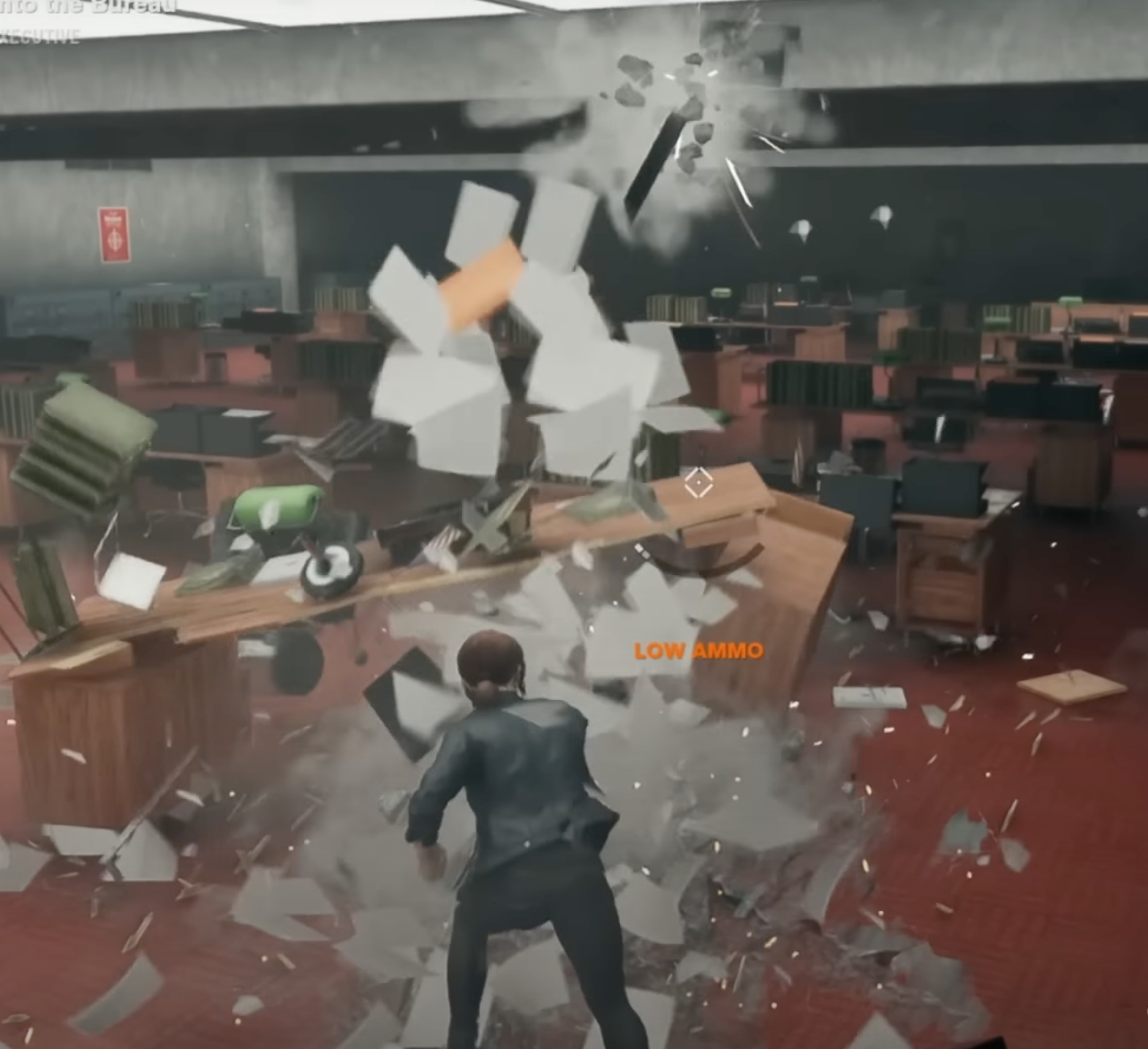
For example, in Starcraft II, when a mechanical unit dies, it shatters into many discrete parts and those pieces are surrendered to the physics engine. This leads to a brilliant display of ship parts bouncing over cliffs and rolling downhill after the death animation has completed.
Touches like this add an additional layer of physical realism, without any concerns of inconsistency in the gameplay.
If that debris had influenced pathing, for instance, something as chaotic as the rotation of a Terran Battlecruiser could dramatically change the outcome of a ground battle below.
By the way, I go over in nuanced details on how to recognize game feel (viscerality) in any game and address it in module 5 of First Principles of Game Design program if you want to learn this more in depth.
Computing Power
Two problems lie at the heart of physics use: load and determinism.
For those not familiar with the terms, load is the measure of computing power drained by the physics simulations in the game. Determinism is the consistency of the results that occur inside the physics systems.
These are typically at odds with each other, especially when games are simulating three dimensions.
If a weaker computer is struggling under intense load, clever shortcuts can simplify the calculations, reducing the load. However, this comes at the cost of reduced consistency. Those calculations were doing something important!
This sort of adaptive physics is fantastic for single-player experiences, where smooth gameplay is more important than perfect consistency in every minor calculation.
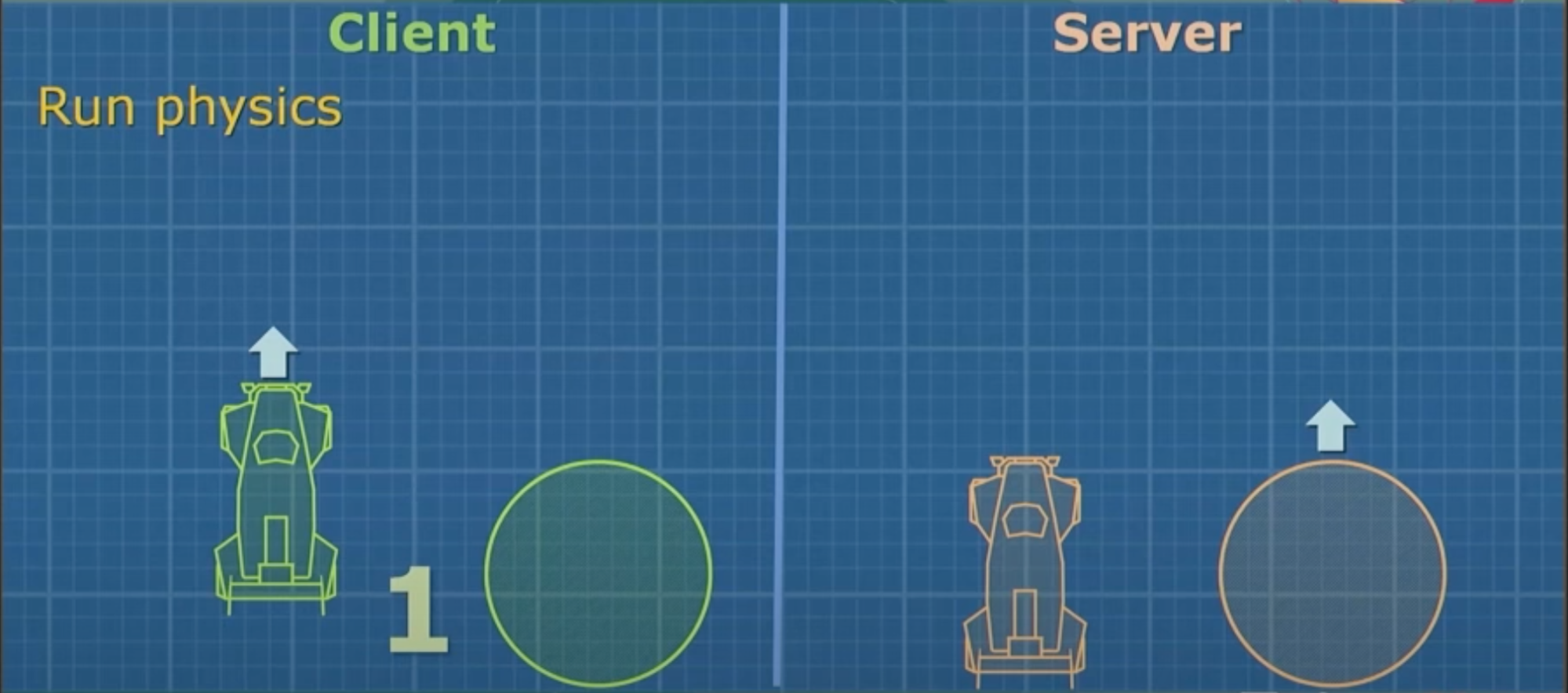
However, in a multiplayer game, if two players are using different physics calculations, their experiences will slowly drift from each other. You can see why this could be dangerous.
Consequently, multiplayer gameplay designers separate the essential gameplay calculations from the cosmetic ones. This ensures that the most important elements are simulated consistently, while forces that don’t matter are left to the whims of the client’s hardware.
Games with Great Physics Design
As always, I want to start any subjective section by saying that I hate unqualified terms like bad and great. They presume an alignment of values between the writer and the reader.
So let’s establish what I mean by great physics design. Whether I personally liked them or not, these games intensely and deeply connect the physics to the core gameplay in a memorable and enjoyable way.
If you’ve played any of these games, think about how their different approaches to physics dramatically impacted your experience. When did the physics strongly support the gameplay? When did the designers depart from realism to remove unnecessary constraints on the game?
You don’t need a science background to design your own games, but you do need to adopt this perspective. Having a clear idea of how the physics supports your game helps you decide when it is worth the processing power and investment from the programmers.
Super Mario Galaxy

Super Mario Galaxy may not be the first game you think of when you think of video game physics, but it is a phenomenal example of designers bending game physics to achieve their vision.
From the small, spherical planets to the wildly diverse local gravities to the novel puzzle solutions enabled by these decisions, Super Mario Galaxy sets a clear benchmark for any traditional game designer.
One could fill novels with all of the custom work that had to be done to make this game a reality, from controls to characters to camera.
Kerbal Space Program
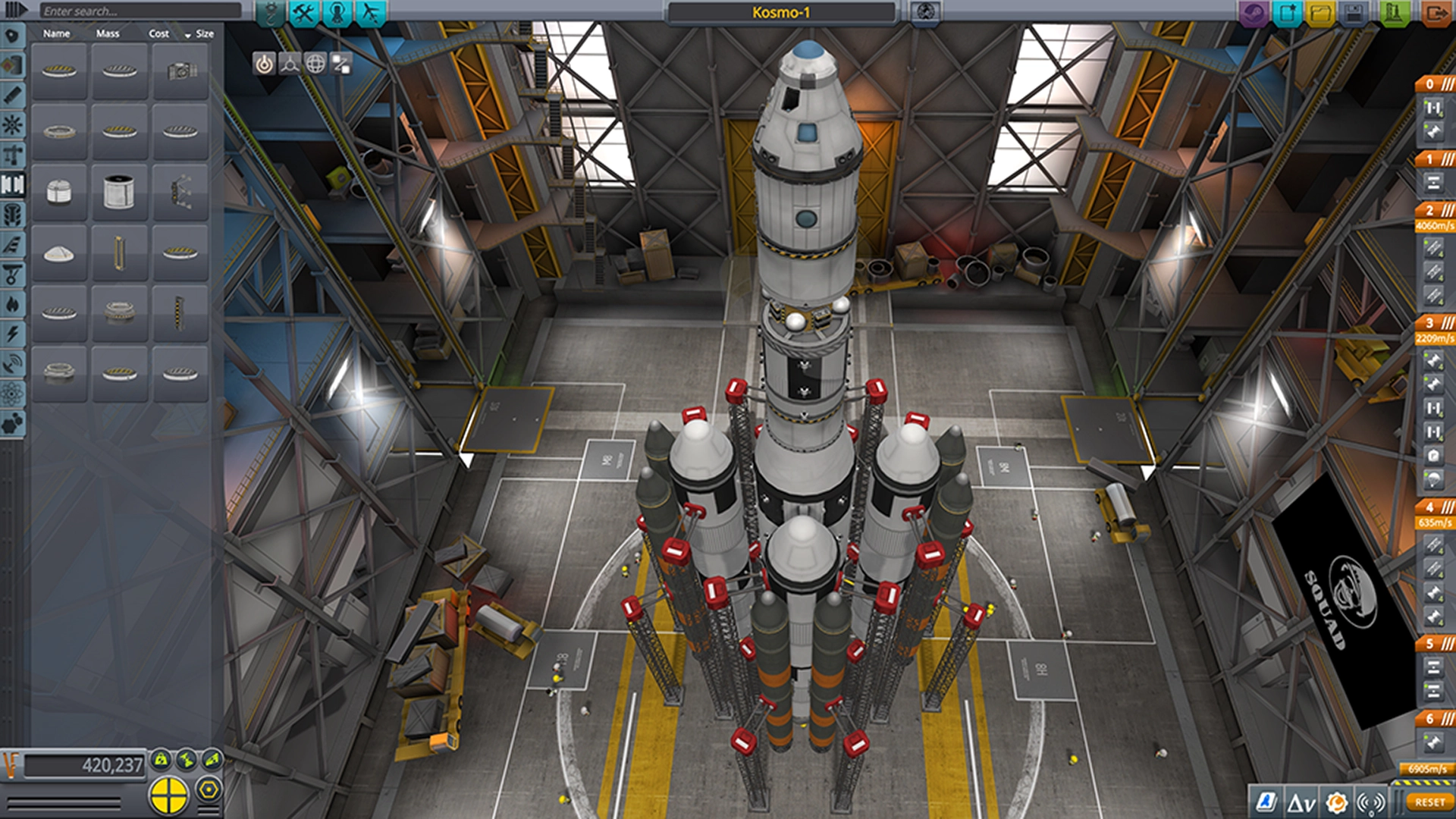
Next up is Kerbal Space Program, a game that actively made me grit my teeth with dislike. However, it introduced an incredibly realistic simulation of rocket propulsion and the consequences of even small imbalances under incredible amounts of force.
This game could not exist without a detailed understanding of game physics, rigid bodies, angular acceleration, fluid dynamics, terminal velocity, and realistic simulations.
While the game’s not a personal favorite, my hat is off in honor of the dedication it takes to release something like this.
Portal
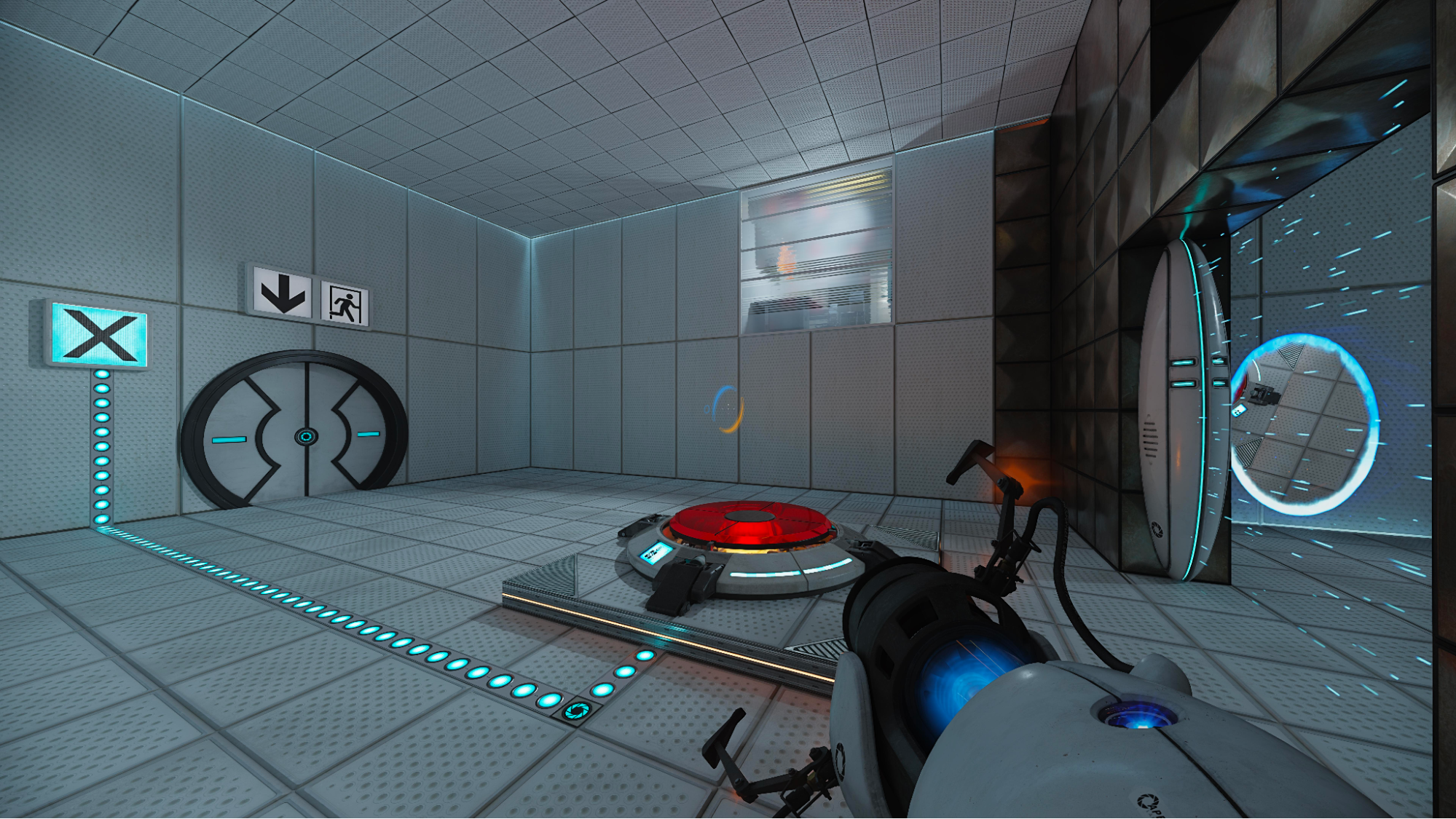
A more common household name, Portal is an easy addition to this list.
While its reality-warping portal mechanic took center stage, the ability to conserve and transfer realistic momentum between portals was at the heart of its most exciting puzzles.
The developers applied simple rigid body laws to simulate things that could never happen in real life in a way that felt natural and intuitive. Full designer brownie points!
Goat Simulator
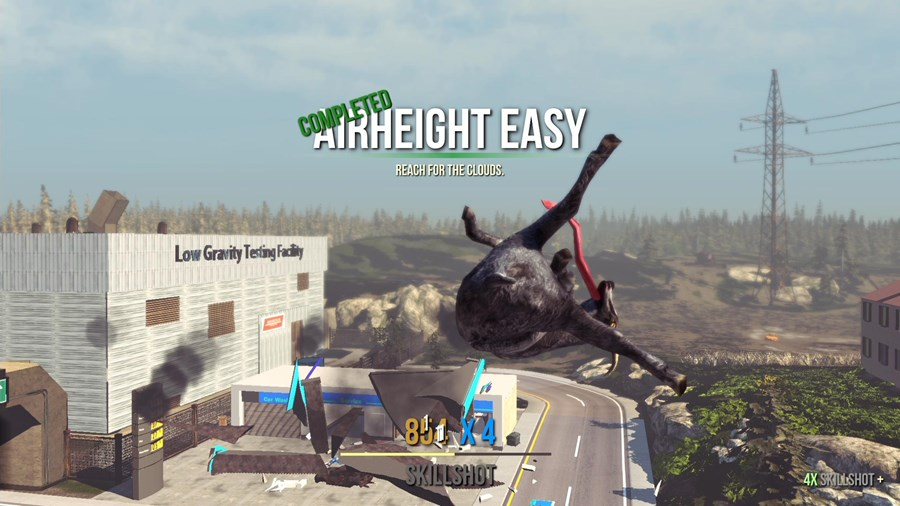
Goat Simulator is another well-applied physics game that is not on my personal favorites list. To quote a review on Metacritic: “It’s not a game for those seeking deep storytelling or structured gameplay; instead, it revels in providing players with a sandbox of mayhem and laughs.”
This game combines an unrealistic set of rules with a physics engine to create ridiculous possibilities.
The immortal titular goat gets to explore the extremes in an open world by combining game elements from trampolines to jet packs.
Outer Wilds
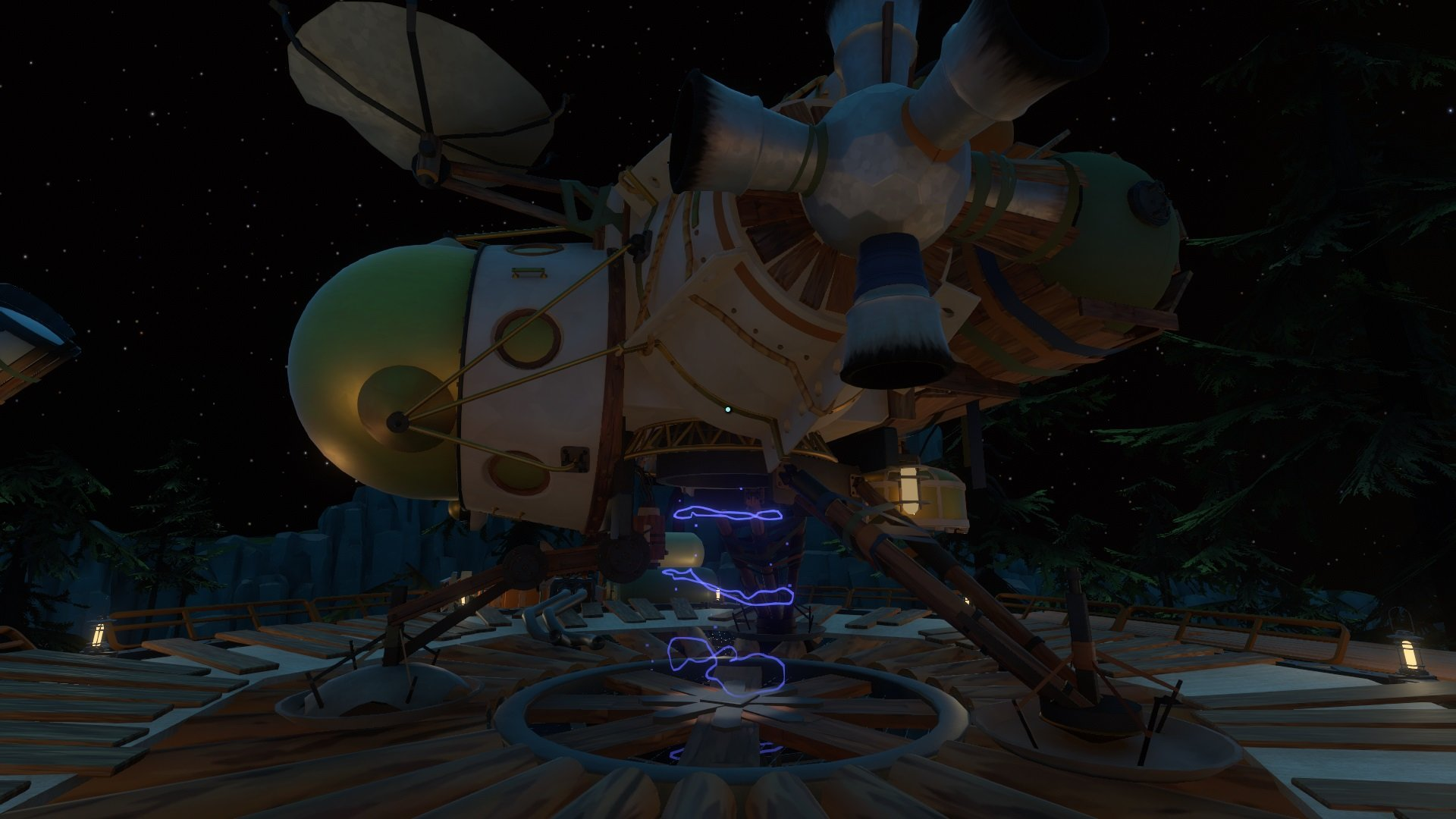
While many people celebrated Outer Wilds for its novel time travel gimmick and level design, I was impressed by the terrifyingly realistic physics used for space flight.
Instead of using simplified plane-flying controls as many space flight simulations do, Outer Wilds forced the player to gain a simplified understanding of fuel, momentum, and microgravity.
Its use of force vectors, momentum, and collisions has the potential to be frustrating early in the game, but it created a pretty good miniaturized model of the challenges of interplanetary space flight.
Tears of The Kingdom
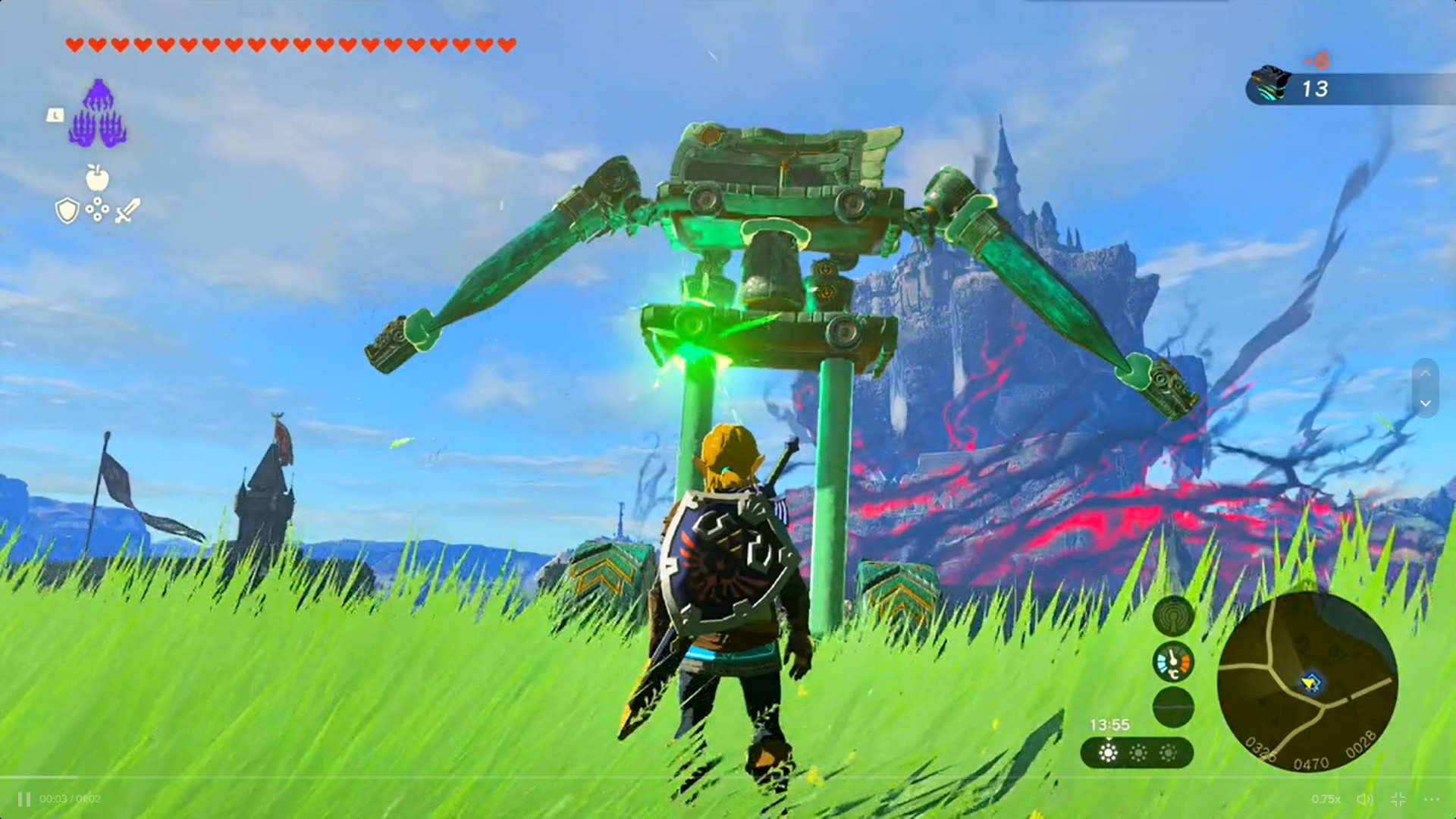
Finally, no list celebrating video game physics would be complete without at least mentioning the Zonai devices woven throughout Tears of the Kingdom.
The combination of simple devices, creative problem-solving, and amazing engineering builds an unforgettable game experience and endless YouTube videos.
How Does a Game Engine Use Physics?
It’s important to distinguish a game engine from a physics engine. Each of these can exist without the other.
A game engine is a combination of input, rendering, and game loop rule processing, ideally with an easy-to-use editor. Its purpose is to expedite the experience of prototyping and shipping a video game.
A physics engine is a series of common tools and rules, such as colliders, rigid body physics, force vectors, joints (aka ragdoll physics), and simulations which can be invoked as part of the gameplay.
A great way to illustrate this difference is to pause the game. While you are paused, the physics is stopped, while the game engine is still running to allow you to access the menu!
How Does a Physics Engine Work?

Physics engines have basically three components:
- The input, which is the current state of the physically interacting objects in the game world
- The static colliders of the world itself
- A simulate function
Each time the simulate function is called, the physics engine utilizes the physics systems to decide how each object will move based on the amount of time that has passed.
Game Physics Systems
Let’s define some of the most common terms in game physics in less technical ways. If you want a more in-depth understanding of the most important physics topics for a game designer, these all make excellent starting Google searches.
Rigid body dynamics
This is the most common type of physics. Rigid bodies are objects that don’t compress, warp, or break.
If you think of the main character of your game, she might have arms, legs, or weapons, but to the software, she is just a sphere, capsule, or cube that is moving around the physics simulation.
Rigid body physics is all about figuring out what to do when these objects intersect or collide. Who gets pushed? How forcefully? In what direction?
Ragdoll physics
Ragdoll physics is the colloquialism used to refer to what happens when a game object is no longer controlled by or relevant to the gameplay. Generally, this happens when an enemy dies and the game lets the surviving physical objects push them around.
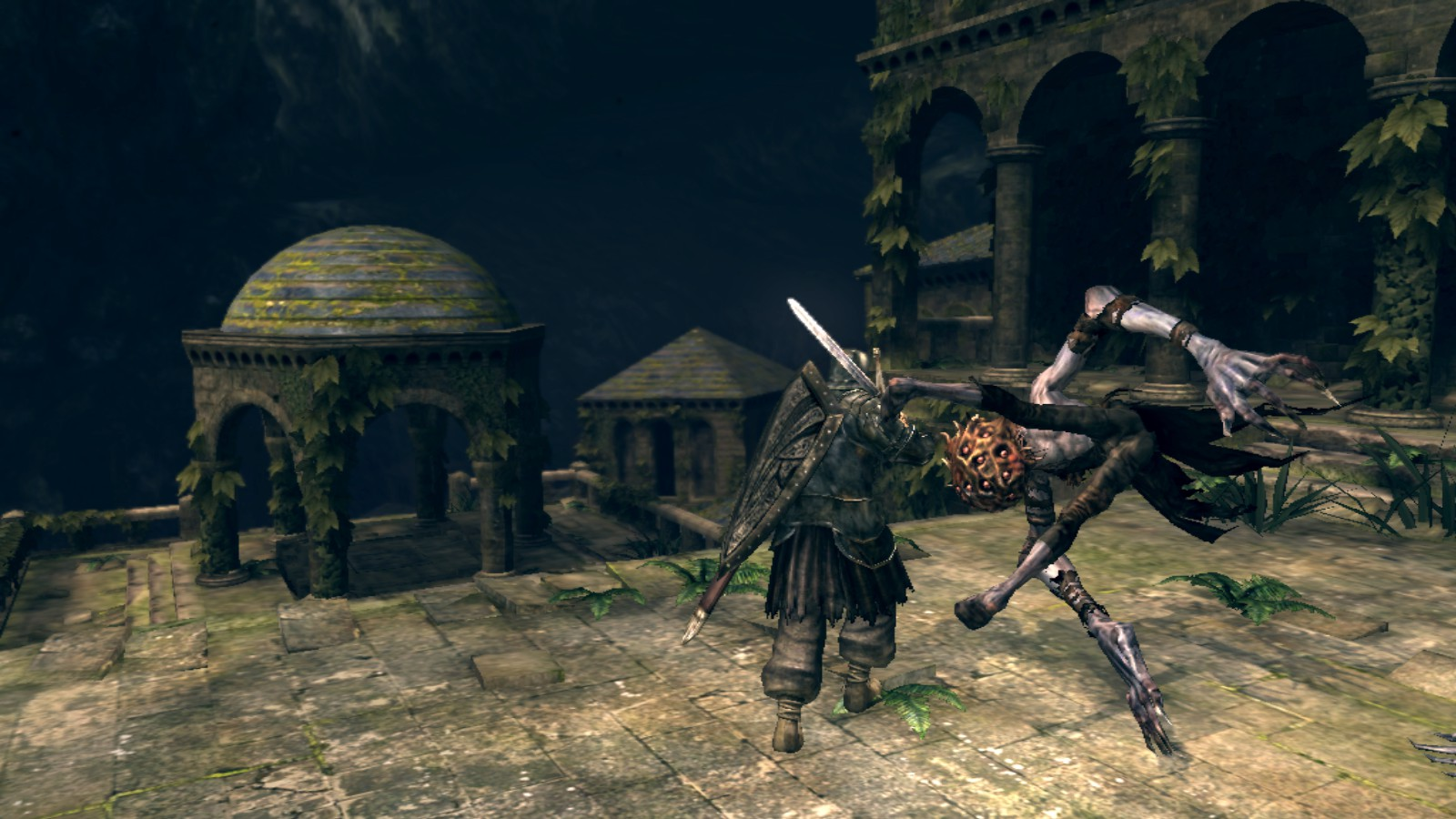
In these cases, cosmetic joints and capsules are used to make the body seem semi-realistic as it drapes over the static collision of the game world.
Collision detection
Collision detection is the most common use of a physics engine in games. Even if you don’t want any objects to push each other in your game, you’ll probably still use this to stop characters falling through the ground.
This is usually done by outlining the physical environment with simple shapes, such as cubes or simple polygons, rather than utilizing the game art itself, which is full of details that don’t need to be simulated.
Particle physics
Once you have the collision detection setup for your gameplay, it’s a relatively easy addition to add support for simulating particles.
This is usually completely disconnected from gameplay and uses the extra GPU cycles left over after the important physics is resolved to add a little extra flavor. This could be bouncing sparks, blowing leaves, or bullet casings that drop to the floor after you fire.
Simulated particles usually use the gameplay colliders, but they always flow around or are destroyed by game elements. They add an element of realism that is purely an aesthetic bonus.
Soft body dynamics
Finally, soft body dynamics I mention only because readers might be curious about it after hearing the term rigid body dynamics.
Hundred to thousands of times more expensive than rigid body calculations, soft body physics allows things like capes, ropes, and cloth to behave in a visually pleasing and natural way.
This is almost always done in a purely cosmetic layer, focusing on gravity and animations. It is very much the crème de la crème of over-the-top visual effects work and is applied with extreme caution.
What Physics Do You Need to Make Video Games?
Most of the specific physics can be left in the hands of programmers and technical artists, but it is essential for game designers to understand at least a few key concepts when developing gameplay controls in modern game engines.
Classical Mechanics
Velocity and acceleration are the most important physics concepts for games.
Velocity is how fast you are moving and in what direction at a given moment. You are never just going 30 miles an hour—you are going 30 miles an hour north. Acceleration is how your velocity is changing. For example, if my initial velocity is 30 miles an hour north, but I have a rocket attached to the front of my car accelerating me at 10 miles an hour south per second, then I will be stopped after 3 seconds and going 30 miles an hour south after 6 seconds.
Many games choose to ignore acceleration and instead move the player at some speed based on the stick input of the controller. In those cases, acceleration is still useful when you create wind tunnels or rivers that push you back.
Gravity is just a special form of acceleration that we all experience daily. We all know in our heads that things fall faster the longer they fall. However, video games regularly increase or decrease this amount to create dramatic experiences.
Momentum is what happens when the player stops pushing. In a frictionless game, objects keep going. Some games, like Megaman X, make the player stop instantly. Others will make the character slow down, either via friction (surface-based reductions in velocity) or by cheating (altering the speed directly without simulating any physics).
More Advanced Physics
If you want to dig deeper into more advanced physics topics, then here are some keywords to search for:
- Joints — how World of Goo and similar games are constructed
- Compound Colliders — how more complex physical simulations are done
- Center of Mass — where an object pivots when it comes into contact with another object
- Rotational Velocity — how fast objects spin around their center of mass
- Oct-tree — a.k.a. islands; how objects are subdivided to increase physical performance
- Impulse — one-time bursts of force onto a game object, often used prematurely in character controller tutorials
- Continuous Collision Detection — a common tool for ensuring high-priority objects don’t pass through each other
Where to Learn Physics for Game Design
Here’s a collection of useful resources to get you started in video game physics through specific examples and important concepts:
- Learn about Jump Physics from Masahiro Sakurai
- Knockback Scaling in Super Smash Bros. [Programming & Tech]
- Platformer Toolkit that lets you adjust the many variables that determine platformer movement
- Jorge R’s Intro to Math for Game Developers – Character Movement (Points and Vectors)
- Louie Zong’s Physics Simulation
If you have a similar resource to recommend, let me know in the Funsmith Club Discord channel and it might get added to this post.
Conclusion
Video game physics is not a small topic. Learning everything discussed in this article could take years if not decades of applied experience in the field. As a beginning designer, remember this:
Physics is a tool to be wielded when and only when your game needs it. Most games create their own movement controls and rules, leaving the physics system to clean up the aftermath and prevent slipping through the world.
Careless use of physics will lead to sloppy—or worse, inconsistent—results that frustrate your players. At best, it will add a new set of techniques for players to ignore, bypass, or cheese your content.
Decide on the vision and seriousness of your gameplay and apply physics wisely.
And feel free to share any questions or comments below.












